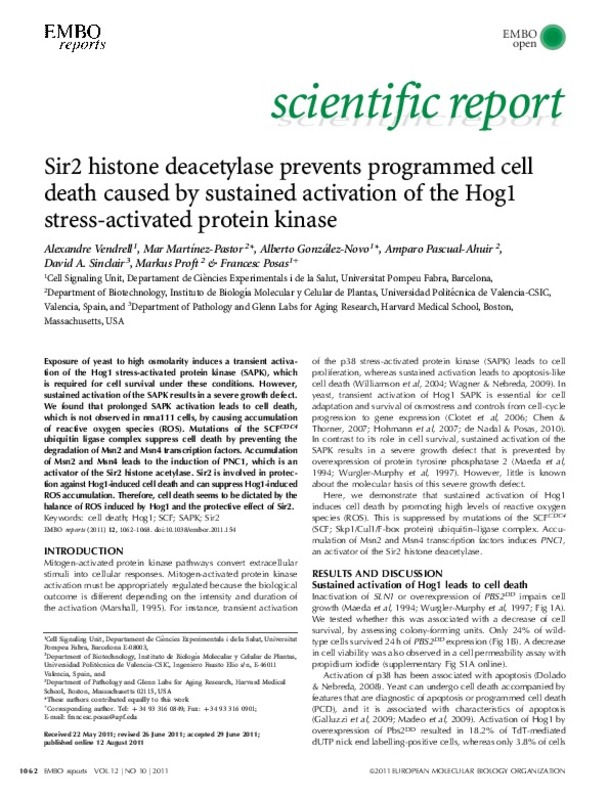JavaScript is disabled for your browser. Some features of this site may not work without it.
Buscar en RiuNet
Listar
Mi cuenta
Estadísticas
Ayuda RiuNet
Admin. UPV
Sir2 histone deacetylase prevents programmed cell death caused by sustained activation of the Hog1 stress-activated protein kinase
Mostrar el registro completo del ítem
Vendrell, A.; Martínez Pastor, MM.; González-Novo, A.; Pascual-Ahuir Giner, MD.; Sinclair, DA.; Proft, M.; Posas, F. (2011). Sir2 histone deacetylase prevents programmed cell death caused by sustained activation of the Hog1 stress-activated protein kinase. EMBO Reports. 12(10):1062-1068. https://doi.org/10.1038/embor.2011.154
Por favor, use este identificador para citar o enlazar este ítem: http://hdl.handle.net/10251/49610
Ficheros en el ítem
Metadatos del ítem
| Título: | Sir2 histone deacetylase prevents programmed cell death caused by sustained activation of the Hog1 stress-activated protein kinase | |
| Autor: | Vendrell, Alexandre Martínez Pastor, María Mar González-Novo, Alberto Sinclair, David A. Proft, Markus Posas, Francesc | |
| Entidad UPV: |
|
|
| Fecha difusión: |
|
|
| Resumen: |
[EN] Exposure of yeast to high osmolarity induces a transient activation
of the Hog1 stress-activated protein kinase (SAPK), which
is required for cell survival under these conditions. However,
sustained activation of ...[+]
|
|
| Palabras clave: |
|
|
| Derechos de uso: | Reserva de todos los derechos | |
| Fuente: |
|
|
| DOI: |
|
|
| Editorial: |
|
|
| Versión del editor: | http://dx.doi.org/10.1038/embor.2011.154 | |
| Código del Proyecto: |
|
|
| Agradecimientos: |
We thank L. Subirana, S. Ovejas and O. Fornas for technical support; G. Ammerer, J. Clotet, X. Escote and G. Mas for their helpful advice and contribution; and E. de Nadal for constant advice and support. This work was ...[+]
|
|
| Tipo: |
|









